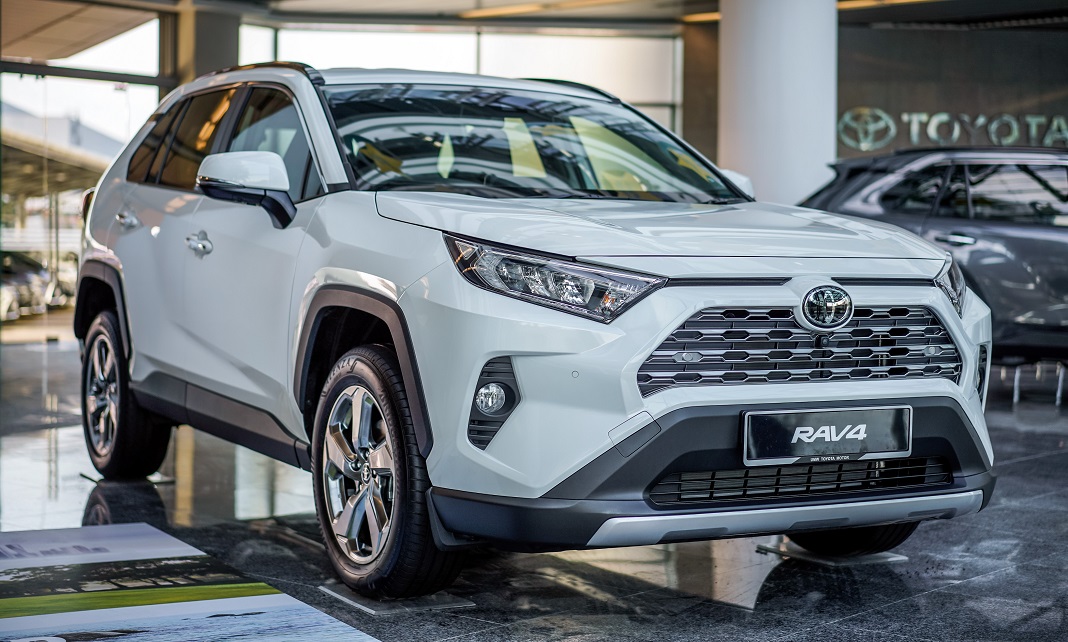 At RM196,436 for the 2.0-litre and RM215,665 for the 2.5-litre variant, the asking prices for the new Toyota RAV4 attracted a lot of attention, probably too much.
At RM196,436 for the 2.0-litre and RM215,665 for the 2.5-litre variant, the asking prices for the new Toyota RAV4 attracted a lot of attention, probably too much.
The mid-sized SUV segment is the most keenly contested in the Malaysian market; the MSRP of the 2.0-litre RAV4 places it some 25% to 30% higher than the top-selling variants of the popular Honda CR-V (RM144,630 to RM166,466) and Mazda CX-5 (RM137,269 to RM181,660). You could also get into a Nissan X-Trail (RM133,888 to RM159,888), Volkswagen Tiguan (RM165,990 to RM175,990) or Peugeot 3008 (from RM158,888 and RM163,888) with a lot of change to spare, and we haven’t even started with the Koreans. Heck, a BMW X1 is RM225,410.
 Some in the media have attempted to rationalise the price of the RAV4 by pointing out that it is fully imported from Japan, thus attracting high taxes. While that is true, it is akin to laying blame on the same uneven football pitch which every team in the league plays on. Inciting consumer rage when taxes for vehicles have barely changed since the 1980s is disingenuous.
Some in the media have attempted to rationalise the price of the RAV4 by pointing out that it is fully imported from Japan, thus attracting high taxes. While that is true, it is akin to laying blame on the same uneven football pitch which every team in the league plays on. Inciting consumer rage when taxes for vehicles have barely changed since the 1980s is disingenuous.

UMW Toyota (and every brand with considerable CKD operations) have over the last few decades met these challenges through investments in local assembly and the localisation of vehicle components; the first ever Vios of 2003 and the Avanza MPV of 2004 (along with multiple generations of Corolla, Camry, Innova, Fortuner, etc.) were landmark models that cemented Toyota’s non-national market share leadership in the 2000s.
UMW Toyota did not just realise last week that the RAV4 would be pricey, it made a conscious business decision despite that, perhaps to build a case for a more cohesive regional move to produce the RAV4 within the ASEAN region, something which Toyota Motor Corporation have so far neglected in favour of frame-based pick-ups and MPVs that reign in Thailand and Indonesia.

No, the RAV4’s biggest problem isn’t its price nor any deficiency in features or technology, it’s how it looks. The original RAV4 cut its teeth as a cheeky compact SUV that put a smile on your face, like a pair of fashionable trainers, and many Malaysians paid a handsome premium to own one (typically used ones sold by parallel importers), and that includes the second-generation model which was officially sold here by UMW Toyota in limited numbers. The third and fourth generations RAV4 grew in size and served the North American markets well but were otherwise forgettable designs.

As much as the new TNGA platform and high efficiency powertrains are admired, it’s hard to say the same of the RAV4 styling. The trapezoidal and polygonal motifs are interesting enough, but the execution of the front grille gives it a fussy, grumpy scowl. And while the body lines and slashes on the sides are crisp, the eyes are inevitably drawn towards those squared off wheel arches which exposes way too much free space within the wheel wells.

The view from the rear is probably the best angle to study the new RAV4, it’s tidy but that in itself isn’t saying much. If the badge had been removed, you’d find it tough to pick the RAV4 out in a crowd of SUVs that ply our roads these days. To be fair to the RAV4, it’s not bad-looking…in a robust, utilitarian kind of way, trouble is, ‘not bad-looking’ is not good enough especially when you want someone to part with serious cash.






